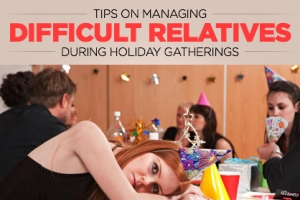Melanoma Monday: 7 things you should know about melanoma
Someone in the United States dies of it about once every hour. Yet if caught early, these deaths are entirely preventable. So what is melanoma and how do you prevent it? Join in the message of the American Academy of Dermatologists (the largest dermatology organization in the world) as they celebrate Melanoma Monday, the kickoff to May’s Skin Cancer Awareness and Detection Month, designed to raise public awareness about this deadly form of cancer. Check out our list of 7 Things You Should Know About Melanoma, and walk away with some important facts.
#1: Know the stats. It could be you.
One in five Americans are going to develop skin cancer in their lifetime. Melanoma is the most deadly of all the skin cancers, with 40,000 to 50,000 deaths or more each year from this disease. Not only that, but the incidence has been dramatically increasing. Decades ago, you have a one in 1,500 chance of developing the condition, and now it is one in 100. Yet most melanoma is caused from overexposure to sunlight: Something that could be prevented.
“We ask people to think about skin cancer, to think about the startling facts,” Dr. Roger Ceilley, M.D., clinical professor of dermatology at the University of Iowa and past president of the American Academy of Dermatology, said. “It’s a myth that maybe you can let (growths) go and that melanoma is like other skin cancers where they will get bigger, but are not dangerous.”
#2: Know the warning signs.
Melanoma starts with a growth that changes or growth that looks like a mole. Here are the rules for a self-exam. Follow the ABCDE’s: the asymmetry (one side is different from the other), border (irregular border), color (mix of colors) or diameter (the size) of your moles could all indicate you have something that needs to be checked. E stands for evolving: if your mole is changing, be sure to get a professional’s opinion. If you have many moles, look for the ones that stand out.
“Just be aware that if you have a sore that doesn’t heal, if you have a mole that grows or changes, that you need to have it checked,” Ceilley said.
#3: Early detection is key.
Early detection is the best chance of preventing deaths from melanoma: Melanoma, when detected early, has a very high cure rate.
“If you detect (growths) early before they get really large or very thick, they are all curable. If you wait until they have gotten farther advanced, they are almost uniformly lethal,” Ceilley said.
If caught early, professionals can cut the growth out and the risk of melanoma spreading to other parts of the body is very low. Skin cancers are easily detectable with an exam.
#4: Know how to protect yourself.
Don’t just slap on the sunscreen to prevent skin cancer. Being “sun smart” goes far beyond that. Try to avoid the midday sun, seek shade when possible, wear protective clothing such as hats, and plan your activities to avoid the most intensive ultraviolet light.
“Using sun protection is not something you need to do once in a while. You need to be aware of it all the time. You don’t just put your seatbelt on when you think you are going to be in a wreck. You need to do it on a regular basis,” Ceilley said.
Children should play in shade when possible: One blistering burn in childhood can double your chances of getting melanoma later on, Ceilley said.
#5: Don’t put it off. Get check-ups regularly.
Routine self examination and examination by a dermatologist yearly saves lives. Be especially careful when you have a personal or family history of skin cancer, if you have fair skin or if you have a lot of moles. Know where to go: The AAD offers many free screening programs in May.
“We’ve had a high numbers of patients come in for a routine skin exam, and we found a mole that looks somewhat different from the rest of their moles and after biopsy, determined that it is melanoma,” Dr. Arielle Kauvar, dermatologist, said.
#6: Young adults are particularly vulnerable.
No, older adults are not the highest risk category. Young adults are disproportionately affected. Melanoma is the most common type of cancer among young adults of ages 25 to 29 and the second most common in adolescents and young adults 15 to 29.
“We are unclear why this is, but we suspect that people are not protecting themselves sufficiently for sun exposure, both from sunlight and from indoor tanning beds,” Kauvar said. And the risk is growing: Since 1992, in girls and women ages 15 to 29, there’s been an increase in melanoma by 3 percent per year.
#7: Think before you head off to a tanning salon.’
There are 28 million people who use indoor tanning salons every year in the U.S. Seventy percent of patrons tend to be girls and young women. But this activity could be hazardous, due to the tremendous amounts of ultraviolet light exposure from tanning beds. Studies have shown that people who frequent tanning salons increase their risk of melanoma by tenfold. Don’t be one of them, experts warn.
“We need people to buy in on the need to care for their skin and stop living in tanning booths and continually damage their skin, their eyes and the rest of their bodies from excessive exposure to ultraviolet light,” Ceilley said.
“Healthy skin is so important to overall health,” Ceilley said. “You need to take care of your skin like you take care of your health.”
For the past 16 years, the AAD has celebrated this month through education the public: press releases, press conferences, public service announcements on radio and television and more. Be sure to check out their website at www.melanomamonday.org for all the educational materials they offer, including what your risk of skin cancer is and how you can reduce it. Features include tips per every day of the month and how to map your moles.
Tagged in: lux exclusives, philanthropy, skin cancer, aad, american academy of dermatologists, prevent, melanoma monday, symptoms, melanoma,

LadyLUX via American Academy of Dermatology



